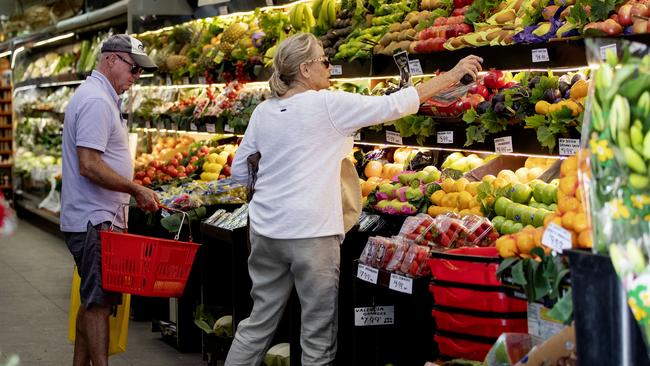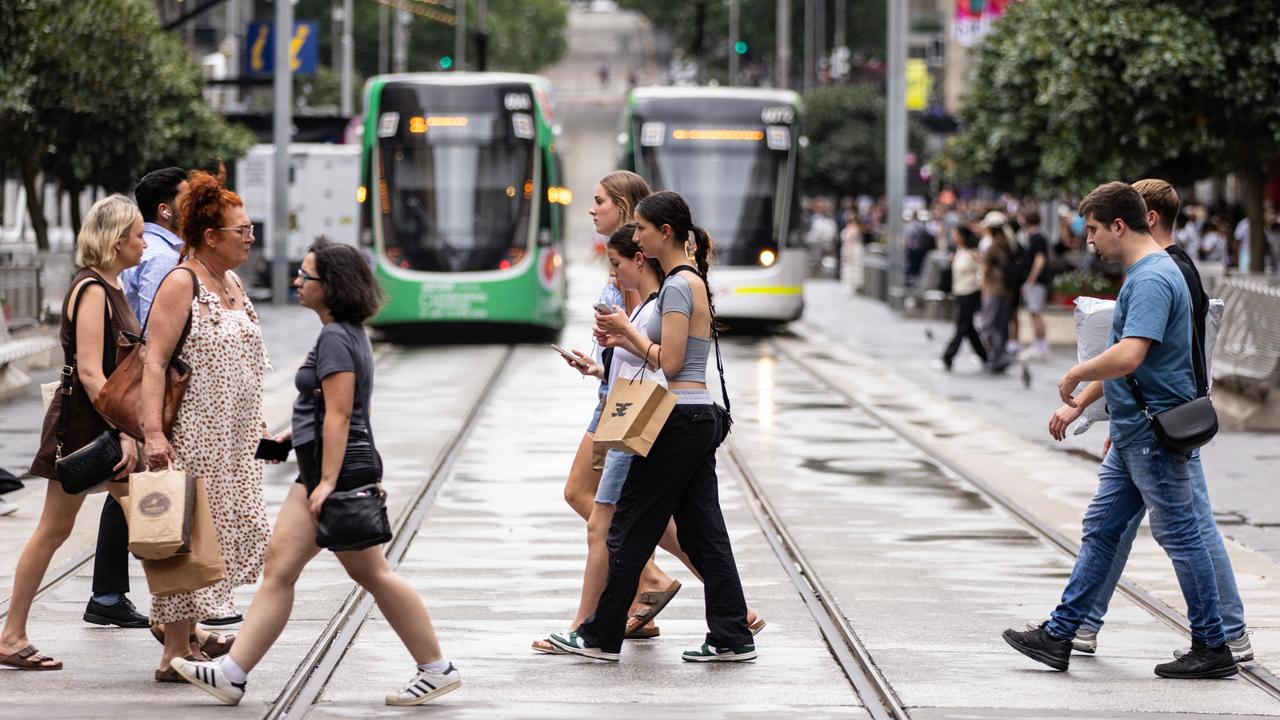Aussies will need to spend $650 more a month by Christmas
A typical Aussie family is expected to need to fork out about $650 more for their mortgage, groceries, petrol and power by Christmas.
Business
Don't miss out on the headlines from Business. Followed categories will be added to My News.
The increasing cost of living is a concern for many Australians.
Treasurer Jim Chalmers has warned of “skyrocketing inflation” and “rising interest rates” as defining challenges in the Australian economy.
So, how much more is a typical Australian household likely to have to fork out on their mortgage, electricity bill, petrol and groceries by Christmas?
About $650 an extra month can be expected. It could be even more.
What will happen to your mortgage?
The Reserve Bank of Australia last month increased the cash rate – by 25 basis points to 0.35 per cent from 0.1 per cent – for the first time in since in more than 11 years.
According to RateCity it meant the average borrower (owner-occupier on an existing variable rate of 2.92 per cent) with a $500,000 loan and 25 years remaining had their repayments rise by $65 a month.
Someone with a $750,000 loan had their repayments rise by $98 and someone with a $1 million loan had repayments rise by $130.
RBA Governor Philip Lowe said that further hikes would be required to bring inflation back into the target band.
Technical assumptions in the RBA board minutes show the cash rate could increase to 1.75 per cent by the end of the year and hit 2.5 per cent by the end of 2023.
However, some experts predict the interest rate could rise to 2.5 per cent much sooner.
Stream more finance news live & on demand with Flash. 25+ news channels in 1 place. New to Flash? Try 1 month free. Offer ends 31 October, 2022 >

If the cash rate does hit 1.75 per cent by Christmas, RateCity said the average borrower with a $500,000 loan could be paying $443 a month more on their repayments than they were in April before the cash rate hikes began.
If it hits 2.50 per cent by the end of 2023 that skyrockets to $651 per month.
“While Governor Lowe has said the RBA doesn’t know exactly how high the cash rate will go, or by when, what we do know is there are plenty more hikes to come over the next year and a half,” RateCity research director Sally Tindall.
How much extra a month? $443
Why is everyone talking about power bills soaring?
Finance comparison site Finder expects household electricity bills to rise by up to 100 per cent in July, due to soaring costs of wholesale electricity.
This is further supported by energy retailer ReAmped Energy, which warned its customers this week that their bills could double and actually encouraged them to switch retailers to try and save money.
Last week, the Australian Energy Regulator announced it had raised benchmark prices for retailers – essentially the maximum they can charge you – from July 1.

Finder energy expert Mariam Gabaji said small energy providers had already started to “drastically hike up prices”.
“Power prices have more than doubled in the past 12 months and smaller energy retailers are starting to crumble under the pressure, passing on the surging costs to customers,” she said.
According to research from Finder in May, the average quarterly electricity bill in NSW is $353.80. That is even higher in South Australia at $383.30.
Looking at NSW, that is $1415.20 a year or $117.93 a month. If the bill was to double, it would be $2830.40 a year or $235.87 a month.
How much extra a month? $118
What happens to petrol prices when the fuel excise cut ends?
In March, the federal government announced a six-month reduction in fuel excise – from 44.2 cents to 22.1 cents per litre.
Mr Chalmers ruled out extending that so it will no longer be the case from September 29.
The current average price for regular unleaded fuel in Sydney is at 203.1 cents per litre, according to the National Roads and Motorists Association’s weekly fuel report.
Based on that, it costs $111.70 to fill up a 55 litre fuel tank.

Even if fuel prices do not increase, with the fuel excise back at 44.2 cents after September, it would cost $225.2 cents a litre.
That means it would cost $123.86 to fill up a 55 litre tank – an increase of $12.16.
If you filled up your tank once a week or four times a month, it would cost $495.44. That is $48.64 more a month.
How much extra a month? $49
Will the price of groceries keep rising?
Aldi’s price report released in May found an average family of two adults and two children spend $192.19 weekly or $9,994.05 yearly on groceries.
For a month, that works out to be $832.83.
If inflation stays at 5.1 per cent, this would increase that spend to $875.30 – an extra $42.47 a month.

In a larger family with four children, Aldi found on average they would spend $278.39 weekly or $14,476.38 yearly.
In comparison, a couple spend on average $136.56 weekly or $7100.96 yearly.
Last month, data published by the Australian Bureau of Statistics showed the price of groceries was up 5.3 per cent annually.
Fruit and vegetable prices were up 6.7 per cent and meat and seafood prices increased 6.2 per cent over the year.

Coles revealed it increased prices by an average 3.3 per cent over the March quarter to pass on the inflated cost of shipping, fuel, meat, and fresh vegetables.
Coles chief executive Steve Cain said costs could climb further in the months ahead.
“Supplier input cost inflation is expected to continue in the fourth quarter and into FY23,” the supermarket told investors.
How much extra a month? $43
Originally published as Aussies will need to spend $650 more a month by Christmas




